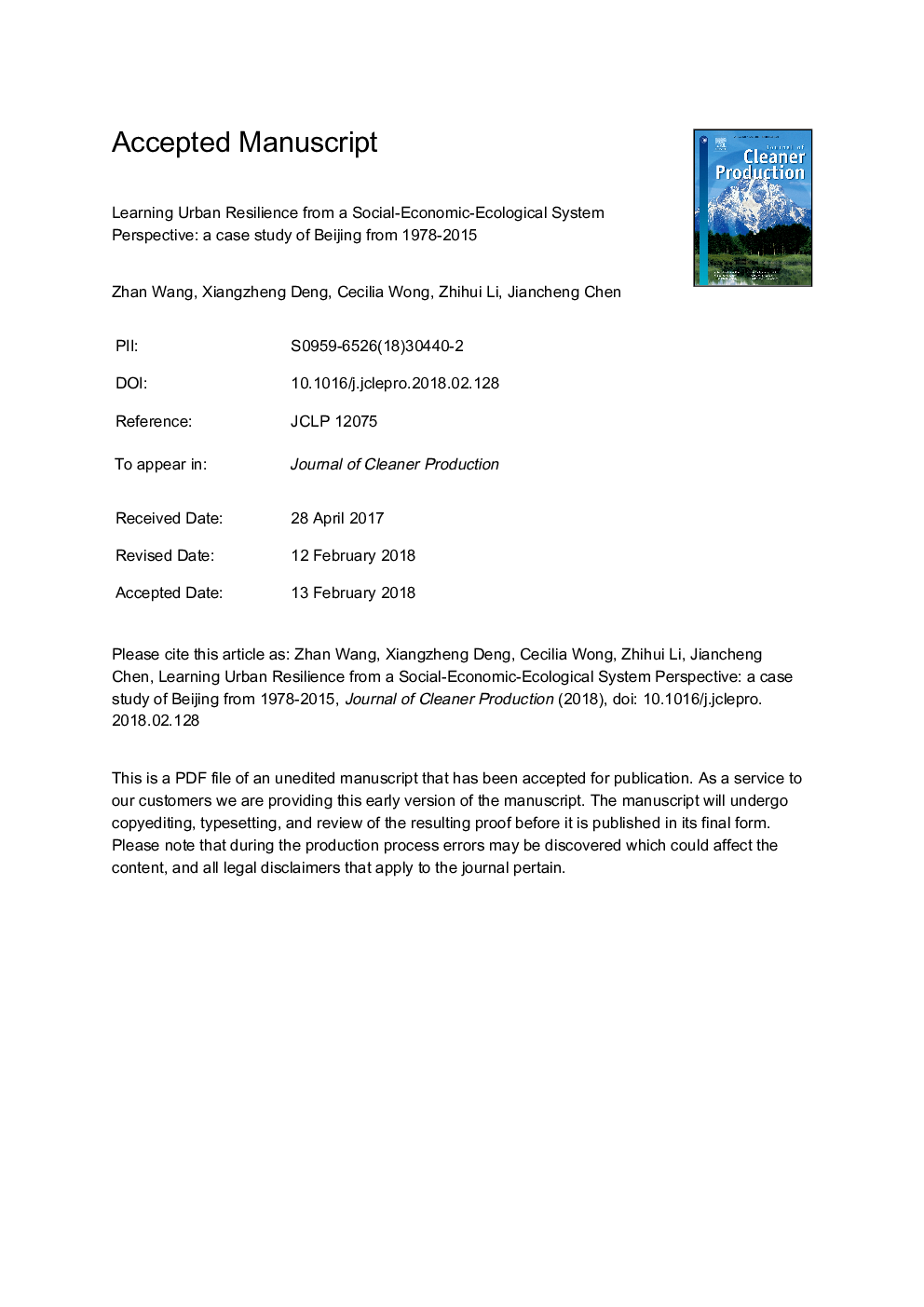| Article ID | Journal | Published Year | Pages | File Type |
|---|---|---|---|---|
| 8097027 | Journal of Cleaner Production | 2018 | 30 Pages |
Abstract
After the People's Republic of China (PRC) established in 1949, central planners have made much efforts to greening the capital city, Beijing. However, with the increasing population and consumption in the city, the increasing environmental risks continually flow into the local social-economic-ecological system (SEES) through ecological intercorrelation from neighborhoods, so that the thresholds of risks challenge the urban resilience of Beijing and the surrounding area. Thereby, we analyze the 139 selected indicators to deeply understand the systematic risks across temporal scale during 1978-2015 in Beijing. Results show the development pathway of Beijing experienced three stages from “entrance”, “soar” to “coursing”. In the current new stage, the ecological impacts and resource use per capita are main constrains to future development in Beijing. This implies to a framework of urban growth for a demonstration pilot path of eco-urbanization in five aspects: 1) strategic clarification of the growth space; 2) design the urban growth path based on ecosystem planning with functional landscape architecture; 3) higher standards of industrial establishments with advanced environmental assessment and monitoring; 4) construction of environmental infrastructures with smart resource recycling; and 5) based on strict implementation of institutions and regulations to maximize the function of market allocation.
Related Topics
Physical Sciences and Engineering
Energy
Renewable Energy, Sustainability and the Environment
Authors
Zhan Wang, Xiangzheng Deng, Cecilia Wong, Zhihui Li, Jiancheng Chen,
